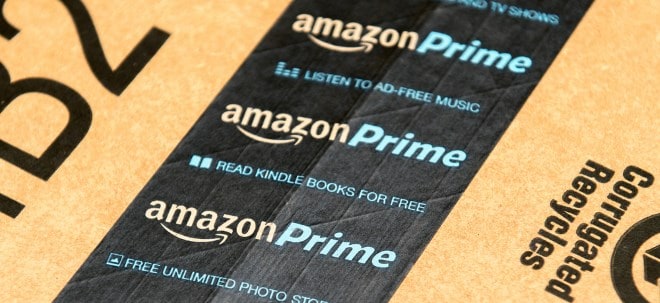Potash is finally getting a seat at the big table with other critical minerals. Once ignored, it’s now shaping debates not just in agriculture, but in trade policy and even nationalsecurity strategy. Strip it down to the basics: no potash, no bread, no rice, no corn. Recognizing it as critical is overdue — and it’s also a starting gun. From here on out, the conversation isn’t just about farming. It’s about food security as a pillar of national security.A quiet mineral steps into the spotlightAugust 2025. The U.S. Geological Survey finally said the quiet part out loud: potash is recommended to be added to the list of critical minerals. Farmers didn’t need a memo. They’ve always known potassium chloride is the engine behind food security. Policymakers, though, spent years swooning over lithium, cobalt, and rare earths. Potash was treated like wallpaper. That’s over. What used to be a farm input is now sitting squarely in the national security conversation.From crop input to critical assetPotash isn’t just another line item in fertilizer blends. Along with nitrogen and phosphate, it makes up the “big three.” It strengthens plant cells, helps crops survive dry spells, increases yields of staples such as corn, soybeans, rice, and wheat and keeps harvests big enough to feed entire nations. Here’s the catch: America imports more than 90% of its potash, mostly from Canada, and until recently from nations such as Russia and Belarus. In calm years, fine. But calm years are rare. The last three have shown how fragile supply chains really are — sanctions, Russian outages, EU tariffs on potash imports. Farmers don’t need to read the headlines. They feel it every planting season.USGS sees consumption climbing from 61 million tonnes of KCl in 2024 to 65 million in 2025. The International Fertilizer Association is more bullish still, and some projections stretch demand to 118 million tonnes by 2050.Brazil imports nearly 90% of its potash, putting it among the world’s biggest buyers. In China, inventories have dropped by more than half a million tonnes, pushing prices higher. And India, which relies entirely on imports, is racing to secure supply beyond Russia.None of this looks like short-term noise. It’s a flashing sign: potash is now a geopolitical lever, not just a farm input.Why food security = national securityFood and security aren’t two separate issues. They’re fused together. Take fertilizer out, and you get smaller harvests, higher grocery bills, and political fires no government wants to face. Remember the Arab Spring in 2011? Bread prices went through the roof. Grain and fertilizer shocks were in the mix.The 1970s told the same story. Fertilizer prices tripled and US food prices spiked nearly 20 percent in a single year. People boycotted supermarkets. In poorer countries, shortages hit like a hammer.The Pentagon has been warning about climate-driven food shocks for years Think of potash the way we once thought of oil: a resource that can destabilize whole regions if supply dries up. Russia and Belarus control nearly 40% of exports. That concentration is a problem the world can’t ignore.Shifting geopolitical mapsGovernments are moving. The European Parliament voted in 2025 to crank up tariffs on Russian and Belarusian potash, aiming as high as €430 per tonne of KCl by 2028. In Washington, the U.S. International Development Finance Corporation — normally focused on lithium and rare earths — is even funding feasibility studies for African potash. Food security is moving to the top of the agenda.US adds copper, potash, silicon in critical minerals list shake-upGabon, in Central Africa, is a prime example. Already a manganese heavyweight, it’s drawing serious investment interest to its fertilizer sector. With Atlantic ports feeding Brazil, Africa, and eastern seaboard of the United States, potash developers in this country may soon play a pivotal role in securing and diversifying potash supply for these regions.The economics of resilienceIn June 2025, Belarus sold potash to India at $349 per tonne KCl — $66 more than the year before. Brazil’s spot hovered near $360 to $365 by mid-year.Those numbers don’t sit quietly on spreadsheets. They roll into higher farm costs, which turn into higher grocery bills.The International Food Policy Research Institute (IFPRI) has said it plainly: volatile fertilizer prices drive food insecurity. The IFPRI emphasizes that fertilizer price spikes and concern about their affordability/availability cast a “shadow on future harvests” and risk keeping food prices high, which in turn threatens food security.When farmers can’t afford inputs, harvests shrink. Nations stretch their reserves to cover costly imports. Donor’s juggle mounting food aid demands with budgets already under strain. Redefining what’s criticalPotash showing up on the draft U.S. critical minerals list is more than a technicality. It unlocks money, policy support, and investor confidence. Rare earths made the same jump from industrial footnote to geopolitical chess piece. I believe potash is next.Defining potash as a critical mineral could lead to innovation in the areas of precision agriculture, nutrient recycling, smaller-footprint mining — tools that trim environmental damage while keeping supply steady. Fertilizer systems should be treated like ports or highways: critical infrastructure.By 2050, global food demand could be up 56% That means fertilizer security isn’t optional. It’s survival.Potash now stands shoulder to shoulder with lithium, copper and rare earths. Ignore it and the costs ripple from farms to dinner tables to foreign policy. Strip it down: no potash, no bread, no rice, no corn. Recognizing it as critical was overdue. The bigger challenge is treating food security for what it truly is — national security.About the author:Farhad Abasov is the Chairman and a Director of Millennial Potash, the company advancing the Banio Potash Project in Gabon in Central Africa. He is a veteran mining executive who has built and sold multiple resource companies, including potash and lithium companies.
Weiter zum vollständigen Artikel bei Mining.com Weiter zum vollständigen Artikel bei Mining.com




